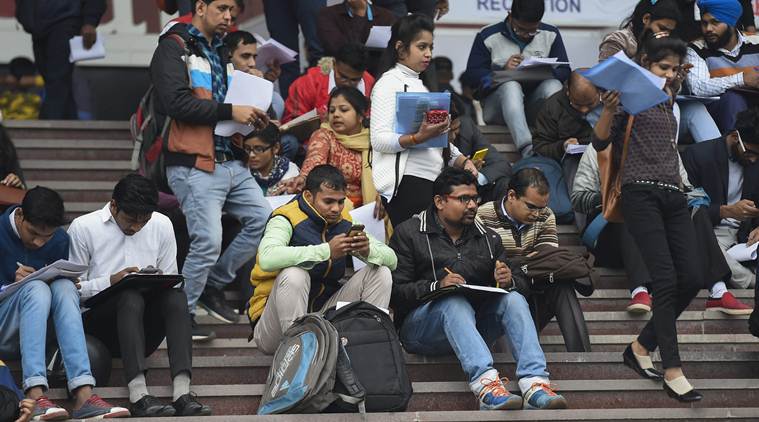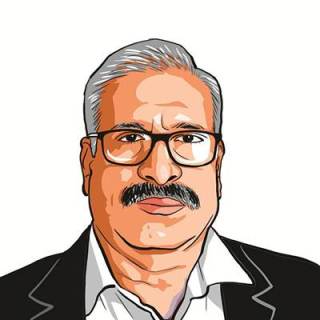The pillar stands
Indian statistical system can withstand political pressures. Legislation and public scrutiny can strengthen it further.

One unfortunate fallout of the recent controversy regarding the non-publication of the labour force survey report by the National Sample Survey Organisation has been the questions raised on the autonomy and independence of the Indian official statistical system. As reported in this newspaper, the possibility of junking the survey report in favour of more acceptable numbers from other sources are being explored. An objective understanding of the official statistical system would dispel many of the fears raised in this context, but cannot overstate the need to further strengthen the institutions.
The credibility of processed official statistics require the government to stay at an arms-length from the processes of data collection, processing and dissemination. It is in this context that the need for an independent board or authority to manage national statistics is widely accepted. The heads of the national statistical organisations are thus treated differently from the usual civil service appointments.
In countries like India, the statistical system is horizontally and vertically decentralised. At the Centre, there are ministries/departments with departmental statistical offices. The vertical decentralisation happens between Union and the states — with the states having powers in some sectors as per the division of responsibilities listed in the Constitution. In this framework, the statistical officers are part of the general civil service and have to necessarily report to the departmental secretaries who are answerable to the concerned minister. Here, it is not always possible for them to exercise the kind of independence one would want them to. The situation is somewhat mitigated by having a common cadre of statistical personnel in all central government offices. This ensures that the statistical officers have on them a controlling influence outside the organisations where they work and leads to better coordination among them. We should be thankful to the foresight of the post-Independence administration for these simple administrative innovations.
In countries like India, the statistical system is horizontally and vertically decentralised. At the Centre, there are ministries/departments with departmental statistical offices. The vertical decentralisation happens between Union and the states — with the states having powers in some sectors as per the division of responsibilities listed in the Constitution. In this framework, the statistical officers are part of the general civil service and have to necessarily report to the departmental secretaries who are answerable to the concerned minister. Here, it is not always possible for them to exercise the kind of independence one would want them to. The situation is somewhat mitigated by having a common cadre of statistical personnel in all central government offices. This ensures that the statistical officers have on them a controlling influence outside the organisations where they work and leads to better coordination among them. We should be thankful to the foresight of the post-Independence administration for these simple administrative innovations.
Like in all other areas, a country with an established tradition of producing official statistics is unlikely to be influenced by transient factors. The Indian statistical system has enjoyed the reputation of being one of the best among similarly-placed countries. Indian statisticians have provided leadership internationally and still occupy key positions in many international agencies and many of them are actively involved in global statistical networks. This would place a moral responsibility on the official statisticians of the country to live up to the standards set by their peers in international fora.
There are also strong links between users and data producers in India with several seminars organised by the Central Statistical Office with the data-user community. There are also sessions on official statistics during annual conferences of professional bodies like the Econometric Society or the Indian Association for Research in Income and Wealth. This has helped the system to understand user needs and the users to appreciate the problems in data collection, increasing the transparency of official data.
A proactive media furthers a system that is visible and answerable to the public. The heightened media interest in official statistics has grown with the expansion of both print and visual media besides social media in recent years. This healthy media interest is encouraging.
One sure way of eliminating any bias towards releasing or withholding of any specific official statistics or reports is to have pre-announced data release dates and strictly adhering to these dates. This is the case with the release of key national indicators like GDP, IIP, CPI, WPI, trade data, etc. However, in many cases like survey reports, no such release dates are announced. This provides an opportunity for the ruling regime to decide on the release or withholding of reports or data.
One sure way of eliminating any bias towards releasing or withholding of any specific official statistics or reports is to have pre-announced data release dates and strictly adhering to these dates. This is the case with the release of key national indicators like GDP, IIP, CPI, WPI, trade data, etc. However, in many cases like survey reports, no such release dates are announced. This provides an opportunity for the ruling regime to decide on the release or withholding of reports or data.
Legislation guaranteeing the independence of statistical agencies is another way of safeguarding the independence of official statistics. Such legislation has been recommended by the UN to member countries. Efforts to legislate the establishment of a statutory statistical commission have not borne fruit in our country. The government’s reluctance to part with its control of statistical information by creating statutory bodies is easily understood, given the impact, such information can have. Here the stature of the head of statistical services — in this case the position of the chief statistician — becomes very important for the professional leadership and integrity it can provide to the system. This is a necessary but not sufficient condition for the independence and autonomy of official statistics. It is seen from experience that in most similarly-placed independent authorities, the government of the day has always a dominant say in the decisions.






































No hay comentarios:
Publicar un comentario